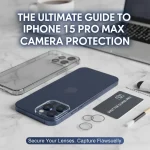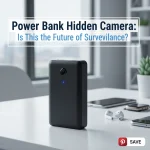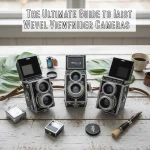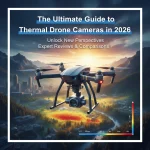[Get the best value fpv drone camera on Amazon today!]
# FPV Drone Camera: The Ultimate Guide for Beginners
So, you’re ready to take your FPV drone flying to the next level? You’ve come to the right place! Choosing the right FPV drone camera can be overwhelming, especially with all the technical jargon and options out there. This guide is designed to cut through the confusion and provide you with everything you need to know to pick the perfect camera for your needs, no matter your budget or flying style. We’ll cover the essential features, explain what they mean, and point you in the right direction. Let’s get started!
[Browse top-rated fpv drone camera on Amazon]
## What Makes a Great FPV Drone Camera?
Before diving into specific recommendations, let’s understand what separates a good FPV drone camera from a not-so-good one. Several factors contribute to the overall performance and suitability of a camera for FPV flying.
* **Image Quality:** This is arguably the most crucial factor. You want a camera that produces clear, sharp, and vibrant images, allowing you to see the environment accurately and react quickly. Resolution, sensor size, and lens quality all play a role here.
* **Latency:** Latency, or lag, is the delay between what the camera sees and what you see in your goggles. Low latency is absolutely critical for FPV flying, as even a slight delay can make it difficult to react to obstacles and maintain control.
* **Dynamic Range:** Dynamic range refers to the camera’s ability to capture detail in both bright and dark areas of the scene. A camera with good dynamic range will allow you to see clearly even when flying in challenging lighting conditions, such as bright sunlight or shadowy areas.
* **Field of View (FOV):** FOV determines how wide of an area the camera captures. A wider FOV can be helpful for navigating tight spaces and avoiding obstacles, while a narrower FOV can provide a more zoomed-in view for precision flying.
* **Size and Weight:** FPV drones need to be lightweight and agile. A smaller and lighter camera will have less of an impact on the drone’s performance and flight time.
* **Durability:** FPV drones, especially those used for freestyle or racing, are prone to crashes. A durable camera that can withstand impacts is essential.
[Browse top-rated fpv drone camera on Amazon]
## Choosing the Right FPV Drone Camera: A Step-by-Step Guide
Follow these steps to find the perfect FPV drone camera for your needs:
### Step 1: Define Your Flying Style
First, consider what type of FPV flying you’ll be doing. Are you a racer, a freestyle pilot, a cinematic videographer, or a beginner just learning the ropes? Each style has different requirements.
* **Racing:** Racers prioritize speed and agility. They need cameras with low latency and a wide FOV to quickly react to obstacles. Durability is also crucial.
* **Freestyle:** Freestyle pilots need cameras that can handle aggressive maneuvers and crashes. Image quality is important, but durability and low latency are paramount.
* **Cinematic:** Cinematic pilots prioritize image quality and dynamic range. They need cameras that can capture stunning footage for their videos. Latency is less of a concern than with racing or freestyle.
* **Beginner:** Beginners should focus on cameras that are easy to set up and use. Durability is also important, as crashes are inevitable.
### Step 2: Understand Key Camera Specifications
Now, let’s delve into the technical specifications of FPV drone cameras.
* **Sensor Size:** The sensor is the part of the camera that captures the image. Larger sensors generally produce better image quality, especially in low light. Common sensor sizes for FPV cameras include 1/3″, 1/2.8″, and 1/1.8″.
* **Resolution:** Resolution refers to the number of pixels in the image. Higher resolution cameras capture more detail. Common resolutions for FPV cameras include 720p, 1080p, and 4K. While higher resolution sounds better, it can also increase latency, so it’s a trade-off.
* **Lens:** The lens focuses light onto the sensor. Lens quality affects image sharpness, distortion, and color accuracy. Look for lenses made of glass rather than plastic.
* **FOV (Field of View):** FOV is measured in degrees and determines how wide of an area the camera captures. A wider FOV (e.g., 170 degrees) is good for racing and freestyle, while a narrower FOV (e.g., 130 degrees) is good for cinematic flying.
* **Latency:** Latency is the delay between what the camera sees and what you see in your goggles. It’s measured in milliseconds (ms). Lower latency is better. Aim for cameras with latency of 20ms or less.
* **TV System (NTSC/PAL):** NTSC and PAL are different video standards used in different parts of the world. NTSC is common in North America and Japan, while PAL is common in Europe and Australia. Make sure your camera and video transmitter (VTX) are compatible.
* **Aspect Ratio (4:3/16:9):** Aspect ratio refers to the shape of the image. 4:3 is a more square format, while 16:9 is a widescreen format. Choose the aspect ratio that matches your goggles.
### Step 3: Consider Your Budget
FPV drone cameras range in price from around $20 to $200 or more. Determine your budget and look for cameras that offer the best value for your money. Remember that spending more doesn’t always guarantee better performance.
### Step 4: Read Reviews and Watch Videos
Before making a purchase, read reviews and watch videos of the cameras you’re considering. This will give you a better idea of their performance and features. Look for reviews from experienced FPV pilots who have used the cameras in real-world conditions.
[Browse top-rated fpv drone camera on Amazon]
## Recommended FPV Drone Cameras
Now that you know what to look for, here are a few recommended FPV drone cameras for beginners:
### RunCam Nano 2
* **Best For:** Beginners on a budget.
* **Key Features:**
* Small and lightweight
* Good image quality for the price
* Low latency
* Durable
* **Why We Like It:** The RunCam Nano 2 is an excellent entry-level FPV camera that offers a good balance of performance and affordability. It’s small, lightweight, and durable, making it a great choice for beginners who are just starting out.
### Caddx Ratel 2
* **Best For:** Versatile all-around performance.
* **Key Features:**
* Excellent low-light performance
* Wide dynamic range
* Low latency
* Durable metal case
* **Why We Like It:** The Caddx Ratel 2 is a popular choice among FPV pilots due to its excellent image quality, low latency, and durability. It performs well in a variety of lighting conditions and is a great option for both racing and freestyle.
### Foxeer Predator Micro V5
* **Best For:** Racing and freestyle.
* **Key Features:**
* Ultra-low latency
* Sharp image quality
* Wide dynamic range
* Durable
* **Why We Like It:** The Foxeer Predator Micro V5 is designed for performance. It offers ultra-low latency, sharp image quality, and wide dynamic range, making it a great choice for racing and freestyle pilots who demand the best.
[Browse top-rated fpv drone camera on Amazon]
## Tools for the Job: Essential Accessories
To get the most out of your FPV drone camera, you’ll need a few essential accessories:
### Video Transmitter (VTX)
A video transmitter (VTX) is a device that transmits the video signal from your camera to your FPV goggles. Choose a VTX that is compatible with your camera and goggles.
* **Why We Recommend:** The **TBS Unify Pro32 Nano** is a fantastic choice for its compact size, reliable performance, and wide range of power output options. Its key features, including its adjustable power levels and clean signal, ensure a stable and clear video feed, which is crucial for a beginner trying to learn FPV. It allows you to start with lower power settings while learning and increase as you gain experience and fly further.
### FPV Goggles
FPV goggles are essential for viewing the video feed from your camera. Choose goggles that offer a comfortable fit, good image quality, and low latency.
* **Why We Recommend:** The **Fat Shark Recon V3** goggles are a great entry-level option. They offer a good balance of affordability and performance, with a comfortable fit and decent image quality. Their key features include a built-in receiver and battery, making them easy to set up and use. The integrated design simplifies the setup process for beginners, allowing them to focus on flying rather than troubleshooting complex connections.
[Browse top-rated fpv drone camera on Amazon]
## Pro-Tips for FPV Drone Camera Setup and Maintenance
* **Protect Your Lens:** Use a lens protector to prevent scratches and damage.
* **Clean Your Lens Regularly:** Use a microfiber cloth to clean your lens regularly.
* **Check Your Connections:** Make sure all connections are secure before each flight.
* **Update Your Firmware:** Keep your camera’s firmware up to date to ensure optimal performance.
* **Calibrate Your Camera:** Calibrate your camera regularly to ensure accurate colors and image quality.
[Browse top-rated fpv drone camera on Amazon]
## FAQ: Common Questions About FPV Drone Cameras
**Q: What is the difference between CCD and CMOS
[Check the latest prices and deals for fpv drone camera on Amazon today!]











